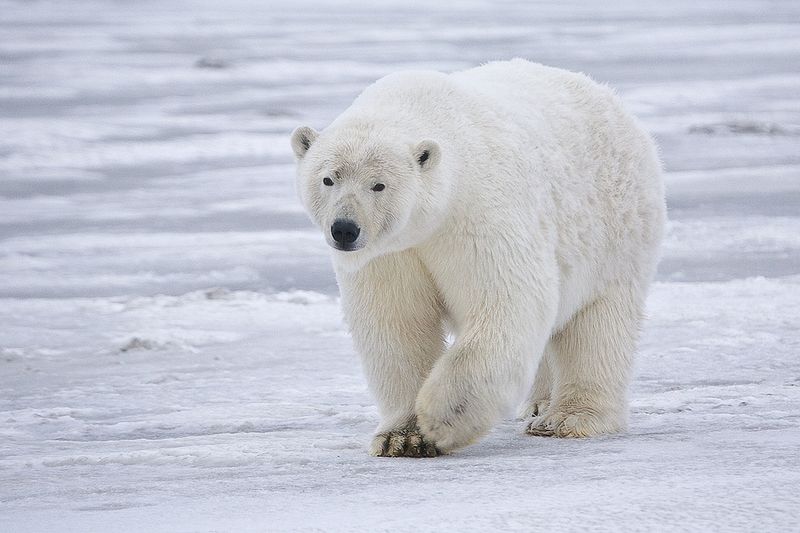We're open daily! View holiday hours
Science News
Polar Bear DNA
April 23, 2012

It all depends on where you look.
Last year we reported that researchers examining the mitochondrial DNA of the polar bear uncovered evidence indicating that the ancestor of polar bears was a brown bear that lived some 150,000 years ago, in the late Pleistocene.
But last week, publishing in the journal Science, a separate group of researchers looking at the nuclear DNA place the polar bears’ origin back further, to 600,000 years ago, and refute that they are descendants of brown bears.
Dating polar bears is very tricky business. (Insert joke here.) Because they spend most of their lives on sea ice, fossils are very rare. Their remains sink to the sea floor, where they get ground up by glaciers, or remain undiscovered. But since the genetic information contained in each organism carries a lot of information about the past, researchers can study the history of the species by looking at the genes of today's polar bears.
The mitochondrial DNA study perhaps only told part of the story. Organelles often called the “powerhouses of the cell”, they only come from the mother. The recent study took a different approach. “Instead of the traditional approach of looking at mitochondrial DNA we studied many pieces of nuclear DNA that are each independently inherited. We characterized those pieces, or genetic markers, in multiple polar and brown bear individuals," explains lead author Frank Hailer.
The information obtained from nuclear DNA indicates that polar bears actually evolved in the mid Pleistocene, some 600,000 years ago. This provides much more time for the polar bear ancestors to have colonized and adapted to the harsh conditions of the arctic. The polar bear's specific adaptations, including its black skin, white fur, and fur-covered feet now seem less surprising. “In fact, the polar bear genome harbors a lot of distinct genetic information,” says Hailer, “which makes a lot of sense, given all the unique adaptations in polar bears.”
Polar bears show much less genetic diversity than brown bears. And the new genetic data indicate that polar bears went through population bottlenecks in the past, perhaps due to phases of climatic warming. In fact, the researchers reveal that polar bears and brown bears came into contact often. The mitochondrial DNA found in polar bears today was probably inherited from a brown bear female that hybridized with polar bears at some point in the late Pleistocene.
Whether polar bears will be able to survive the current phase of sea ice melting is not clear. First, human impacts are accelerating the rate of climate change, and the arctic could reach higher temperatures than in previous interglacial warm phases. In addition, numerous human‐related issues are threatening the polar bear today.
Considering the wider implications of the study, Hailer concludes “They clearly were able to survive previous warm phases. If we were to lose polar bears in our era, we would have to ask ourselves what role we played in pushing them over the edge.”
Image: Alan Wilson/Wikipedia